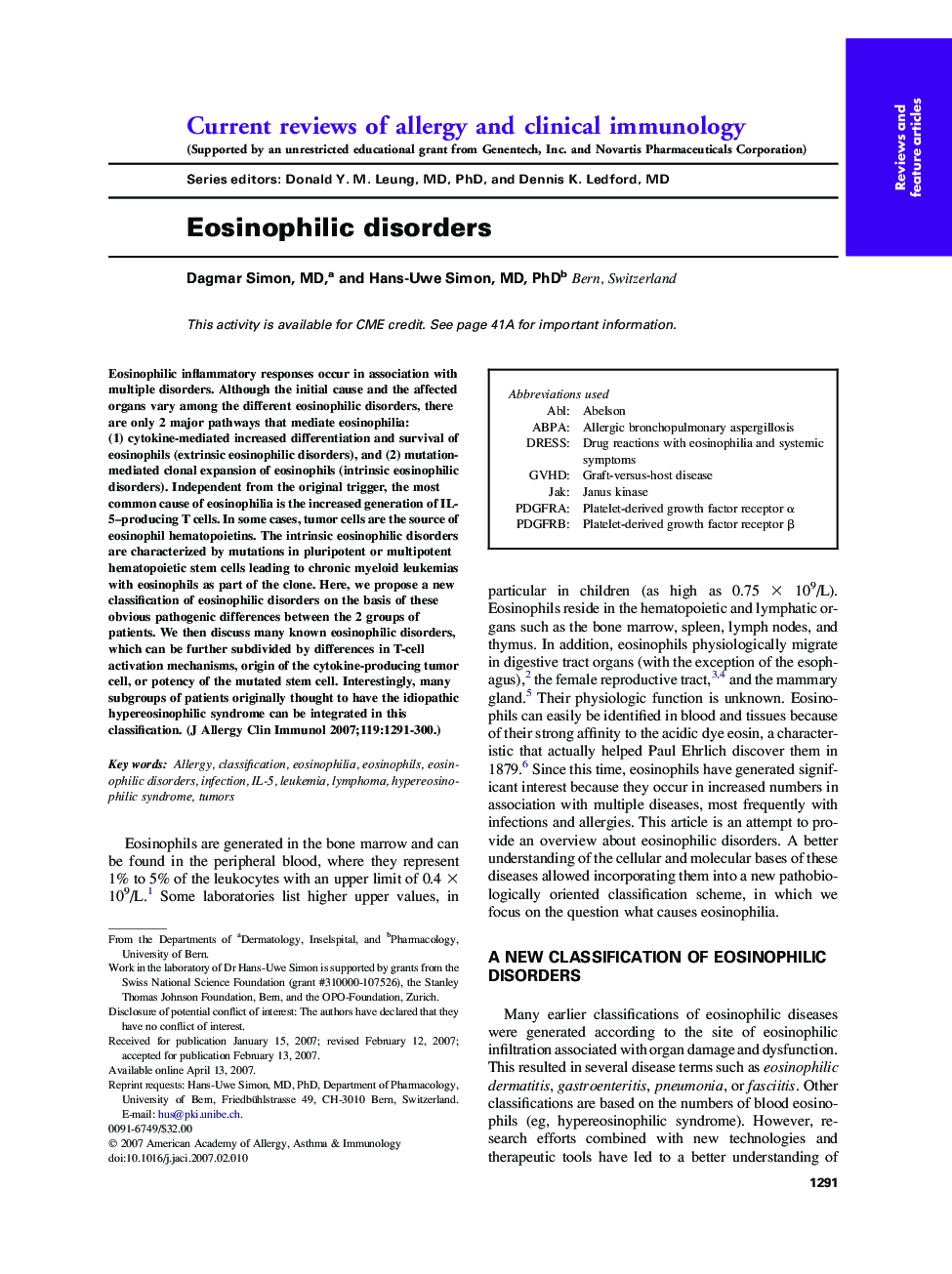| کد مقاله | کد نشریه | سال انتشار | مقاله انگلیسی | نسخه تمام متن |
|---|---|---|---|---|
| 3203320 | 1201995 | 2007 | 10 صفحه PDF | دانلود رایگان |

Eosinophilic inflammatory responses occur in association with multiple disorders. Although the initial cause and the affected organs vary among the different eosinophilic disorders, there are only 2 major pathways that mediate eosinophilia: (1) cytokine-mediated increased differentiation and survival of eosinophils (extrinsic eosinophilic disorders), and (2) mutation-mediated clonal expansion of eosinophils (intrinsic eosinophilic disorders). Independent from the original trigger, the most common cause of eosinophilia is the increased generation of IL-5–producing T cells. In some cases, tumor cells are the source of eosinophil hematopoietins. The intrinsic eosinophilic disorders are characterized by mutations in pluripotent or multipotent hematopoietic stem cells leading to chronic myeloid leukemias with eosinophils as part of the clone. Here, we propose a new classification of eosinophilic disorders on the basis of these obvious pathogenic differences between the 2 groups of patients. We then discuss many known eosinophilic disorders, which can be further subdivided by differences in T-cell activation mechanisms, origin of the cytokine-producing tumor cell, or potency of the mutated stem cell. Interestingly, many subgroups of patients originally thought to have the idiopathic hypereosinophilic syndrome can be integrated in this classification.
Journal: Journal of Allergy and Clinical Immunology - Volume 119, Issue 6, June 2007, Pages 1291–1300